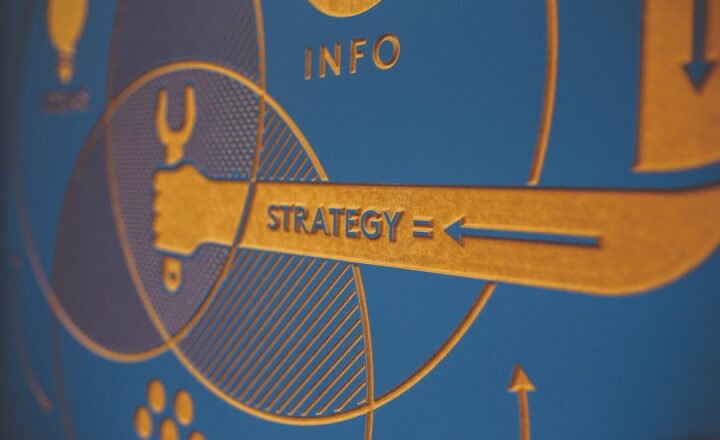The Psychology of Advertising: What Really Drives Consumer Behavior?
October 23, 2024

Advertising has long been a key driver of consumer behavior, but what is it about certain ads that compel people to make a purchase or engage with a brand? Understanding the psychology behind advertising is essential for creating campaigns that resonate with audiences and drive desired actions. In this comprehensive guide, we’ll explore the psychological principles that influence consumer behavior and how marketers can leverage these insights to create more effective advertising strategies.
1. The Role of Emotion in Advertising
One of the most powerful drivers of consumer behavior is emotion. Research shows that people are more likely to remember and act on advertisements that evoke strong emotions, whether positive or negative. Emotions such as happiness, fear, surprise, or nostalgia can create a deep connection between the consumer and the brand.
For example, ads that use humor often stand out because they make the audience feel good, leading to positive associations with the brand. On the other hand, fear-based advertising, such as insurance ads that emphasize the dangers of not being prepared, can prompt immediate action. Understanding the emotional triggers of your target audience is key to creating ads that resonate on a deeper level.
2. The Principle of Social Proof
Humans are social creatures, and we often look to others to guide our decisions. This is where the principle of social proof comes into play. Social proof refers to the idea that people are more likely to engage with a brand or product if they see others doing the same. This can take the form of customer reviews, testimonials, influencer endorsements, or simply seeing a product being used by others.
In advertising, social proof can be a powerful motivator. Brands often highlight how many people use or recommend their product to build trust and credibility. For example, ads that showcase customer reviews or include the phrase ‘over a million sold’ can significantly influence consumer decisions.
3. Scarcity and Urgency
Scarcity is a well-known psychological principle that suggests people place higher value on items that are perceived to be limited in availability. The fear of missing out (FOMO) can drive consumers to make a purchase decision quickly, especially when they believe a product will soon run out or a deal will expire.
Advertisements that include phrases like ‘limited-time offer,’ ‘only a few left in stock,’ or ‘exclusive deal’ tap into this psychological trigger. Urgency compels consumers to act quickly before they lose the opportunity to take advantage of an offer, even if they weren’t initially planning to make a purchase.
4. The Power of Reciprocity
The principle of reciprocity refers to the idea that people feel compelled to return a favor when something is given to them. In advertising, brands can use this principle to their advantage by offering free samples, discounts, or valuable content. When a consumer feels that they’ve received something of value for free, they are more likely to reciprocate by making a purchase or engaging with the brand.
For example, many online businesses offer free trials or downloadable resources in exchange for signing up for a newsletter. By giving something of value upfront, brands can build goodwill and increase the likelihood of future purchases.
5. Anchoring and Framing Effects
Anchoring refers to the human tendency to rely heavily on the first piece of information (the ‘anchor’) when making decisions. In advertising, this often comes into play with pricing. For example, if a product is originally priced at $100 but is being sold at a discount for $50, the consumer perceives the $50 price as a great deal, even if $50 is still a substantial amount.
Framing, on the other hand, refers to how information is presented. The way a message is framed can significantly impact how it is received. For example, an ad that says ‘90% fat-free’ is likely to be more appealing than one that says ‘contains 10% fat,’ even though both statements convey the same information. By carefully framing offers and information, advertisers can influence consumer perceptions and drive decision-making.
6. Cognitive Dissonance and Post-Purchase Behavior
Cognitive dissonance occurs when people experience discomfort from holding conflicting beliefs or attitudes. In the context of consumer behavior, this often happens after a purchase when a consumer begins to question whether they made the right decision. This is known as post-purchase dissonance.
Advertisers can alleviate this by providing reassurance after the purchase. Follow-up emails, customer support, and satisfaction guarantees can help reduce cognitive dissonance and increase customer satisfaction, making it more likely that the customer will return for future purchases.
7. The Mere Exposure Effect
The mere exposure effect is a psychological phenomenon where people tend to develop a preference for things they are repeatedly exposed to. In advertising, this means that the more often a consumer sees a brand or product, the more likely they are to develop positive feelings towards it.
This is why consistency in advertising is important. Whether it’s through TV commercials, online ads, or social media, repeated exposure helps build familiarity and trust, ultimately leading to increased brand loyalty and conversions.
8. Color Psychology and Visual Appeal
The colors used in advertising can have a profound effect on consumer behavior. Different colors evoke different emotions and associations. For example, blue is often associated with trust and dependability, which is why many financial institutions use blue in their branding. Red, on the other hand, is associated with urgency and excitement, making it effective for promoting sales or limited-time offers.
Understanding the psychology of color and its impact on mood and decision-making can help advertisers create more visually appealing and effective campaigns.
9. The Halo Effect
The halo effect refers to the tendency for positive impressions of one aspect of a product or brand to influence opinions on other aspects. For example, if a consumer has a positive experience with a particular product, they may assume that all products from that brand are of similar quality.
Brands can leverage the halo effect by focusing on key product attributes or positive experiences in their advertising. A product that has received awards or high ratings can create a ‘halo’ over the rest of the brand’s offerings, enhancing overall brand perception.
10. The Impact of Storytelling
One of the most effective ways to connect with consumers is through storytelling. Humans are naturally drawn to stories, and advertising that tells a compelling story can create an emotional connection with the audience. Storytelling helps to humanize a brand, making it relatable and memorable.
Successful ads often incorporate narratives that reflect the values, challenges, or aspirations of the target audience. Whether it’s a heartwarming family story or a tale of personal triumph, storytelling can elevate an ad from a simple product pitch to an emotional experience.
Conclusion
The psychology of advertising is complex, but by understanding the key principles that drive consumer behavior, marketers can create more effective campaigns. Whether it’s tapping into emotions, leveraging social proof, or creating a sense of urgency, psychological insights can help brands connect with their audience on a deeper level and drive meaningful action. In 2024, advertisers who incorporate these strategies will be better equipped to navigate the ever-evolving digital landscape and achieve lasting success.





